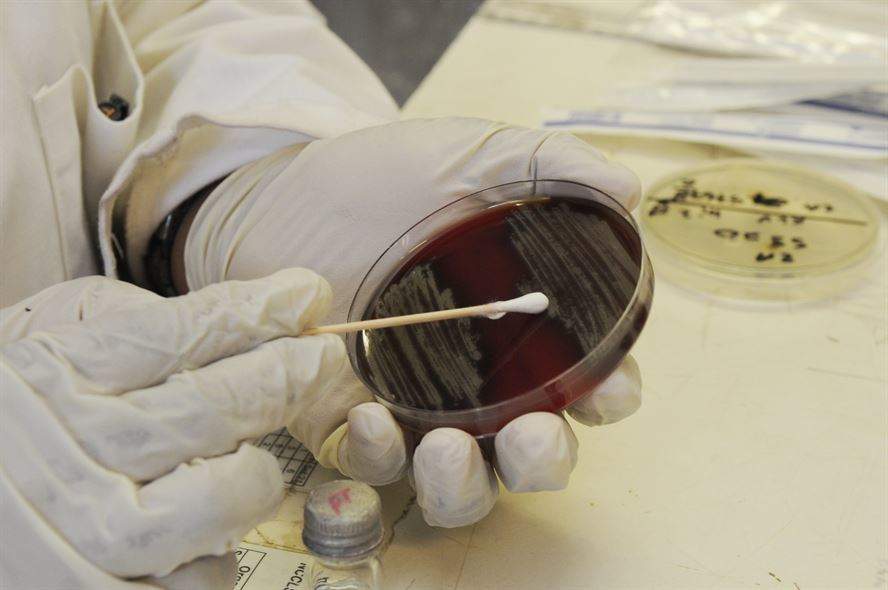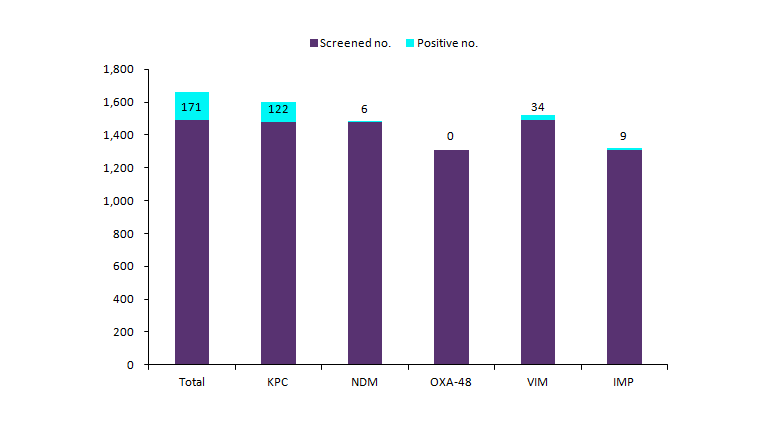
Since their invention during the last century, antibiotics have revolutionised healthcare. However, excessive use, over-prescription and the emergence of antibiotic-resistant infections means antibiotics being likened to a lit window in the night that flashes open for just a moment before it shuts again, according to Dr Robert Masterton, executive medical director and consultant microbiologist at Scotland’s NHS Ayrshire & Arran.
“We used to think that, no matter if someone got an infection, we could always treat them with powerful antibiotics,” he says. “It is only in the last decade that it has been hammered home that we are running out of antibiotics. The number of antibiotics coming on to the market has now dwindled to almost nothing. We are now talking about treating people with serious illnesses yet we cannot rely on new pipelines of antibiotics coming through.”
System options
In theory, clinicians trying to reduce the frequency of resistant bacteria in hospitals have five options at their disposal: reduce antibiotic use; better control the spread of bacteria; use antibiotics for which there is no resistance; increase the rate of turnover of patients; and restrict the input of patients and healthcare workers carrying resistant nosocomial pathogens.
Of these five – all of which clinicians now increasingly use – the tool of antibiotic cycling aligns most closely with the first, the reduction of antibiotic use. Antibiotic cycling is a process of planned antibiotic restriction, introduced through the cycling of drug selection based on local surveillance, with a plan drawn up for the scheduled rotation of one class of antibiotics and the cycle repeated.
See Also:
“It is a strategy that organisations adopt in terms of their approach to reducing the burden of resistance,” explains Masterton. “It has been associated with being helpful in terms of dealing with problems surrounding resistant organisms. Cycling is a bit like putting a different cassette in your machine, where you decide your next three months will be antibiotic X and then antibiotic Y for nosocomial infections, then whenever the patient needs to be treated for that condition and in that timeline.”
How well do you really know your competitors?
Access the most comprehensive Company Profiles on the market, powered by GlobalData. Save hours of research. Gain competitive edge.

Thank you!
Your download email will arrive shortly
Not ready to buy yet? Download a free sample
We are confident about the unique quality of our Company Profiles. However, we want you to make the most beneficial decision for your business, so we offer a free sample that you can download by submitting the below form
By GlobalDataThe introduction of such a system can have the benefit of improving the effectiveness of antibiotic prescribing, particularly in the post-operative intensive care unit environment, and can also lead to the reduction of nosocomial infections in ICU as well as reduced mortality rates.
For example, in autumn 2008, it was reported in Surgical Infections how doctors at the University of Virginia Health System had significantly reduced MRSA infections among surgical intensive care patients by using antibiotic cycling. By switching between two antibiotics called linezolid and vancomycin every three months in the surgical ICU, MRSA infection rates decreased from 1.9 to 1.4 patients per 100 admissions. In-hospital mortality from surgical ICU-acquired MRSA infections fell from 3.8 patients per year to none in the same period.
“Before we began cycling, 67% of the Staphylococcus aureus infections in our surgical ICU were caused by MRSA,” says Dr Robert Sawyer, a professor of surgery and co-director of the UVA’s Surgical Trauma Intensive Care Unit. “Cycling reduced MRSA cases to 36% of that total.”
Proof in the process
What might at first glance look like a cut-and-dried success story, on further investigation becomes more complicated, because questions are now being raised about whether it is antibiotic cycling that causes such improvements, or simply the general changes in prescribing and working patterns and awareness that go with the introduction of an antibiotic cycling programme.
It is clear that for physicians faced with resistance problems, antibiotic cycling is a potentially employable intervention, which at the very least will do no harm and may well lead to improvements, points out Masterton. While it is important to recognise that the benefits cycling may produce will be genuine, it is equally crucial to recognise that it may not be the cycling that is the reason for the improvement.
“When institutions introduce cycling they are simply adopting a system of good stewardship,” says Masterton. “If you review the literature on the ground there is now strong evidence for it. But we do really still need more data. Cycling can be helpful, particularly in simply improving anti-bacterial prescribing, but it is probably not the cycling itself but the rigour that it brings that is making the difference.”
What many clinicians and researchers are turning their attention to is what is called “antibiotic heterogeneity”, which, in effect, is applying antibiotic cycling at a higher level.
Antibiotic heterogeneity is a strategy used to reduce antibiotic pressure to prevent or minimise the emergence of antibiotic-resistant strains with the main difference that at any given time equal fractions of the patient population receive different antibiotics, rather than single ones simply being cycled. The intention is to create a heterogenic, or diverse, use of antibiotics that is effective in terms of treatment and which pathogens find harder to develop resistance to. This heterogeneity is usually accomplished by administering different classes of antibiotics in consecutive patients.
“In a structured way you introduce a mixed class approach to antibiotic cycling,” says Masterton. “You take it up to the next level. The evidence is largely theoretical so far, but the modelling suggests that antibiotic cycling may not be that effective, but antibiotic heterogeneity will be reasonably effective.”
Culture change
Yet, even if the research can prove the benefits, a key challenge will always be education and getting clinicians and healthcare workers to change how they work and care for patients, whether in the ICU setting or elsewhere, stresses Masterton.
“Clinicians are a breed unto themselves and believe they know best,” he says. “It does not matter how good your evidence is, clinicians will find a way to rubbish it if they want to. To effect change you need to induce a culture where they understand the need for change and how best to adopt that change. For example, the NHS is brilliant at investing in new technology if you want a new cancer drug, but we do not invest enough in empowering organisations, understanding organisations or organisational change. The evidence is now showing us that unless we introduce a culture change, you cannot rely on any one single intervention.”
With antibiotic cycling, if people can be educated about it, then it tends to work, given that most of the benefits appear to come from improved techniques, thought processes and working patterns. But even here a “multi-factoral” implementation programme is required, which includes audit, feedback and visual and auditory triggers that encourage people constantly to cycle.
When it comes to antibiotic heterogeneity, the theoretical evidence – and it is as yet mostly theoretical – is that so far, yes, it is a better way of using antibiotics.
“What we need is more data on antibiotic heterogeneity, because that is really the Holy Grail,” says Masterton. “It will be the next improvement. We certainly should not be taking our foot off the pedal.”
Despite all the advances that have been made over the years, there are still clinicians who do not know about prescribing and when to de-escalate what they are prescribing for a patient.
“The number of infections we know the right time of treatment for is very small,” says Masterton. “For example, for nosocomial infections, should we be treating for ten to 14 days, eight or even five?”
Method is key
As resistant bacteria spread, with all the financial and health-related implications this brings, questions that were once considered arcane are becoming ever more pressing.
Whether it is through antibiotic cycling or heterogeneity that the breakthrough comes – or indeed whether through another completely different and as yet unthought-of approach – what is clear is that how, where and when we prescribe antibiotics is going to be a key patient care issue for the future.
“If we can reduce the tonnage of antibiotics pouring into the environment then we can reduce the antibiotic pressure and give ourselves a much better store for the future,” says Masterton.






